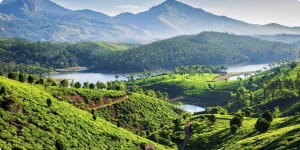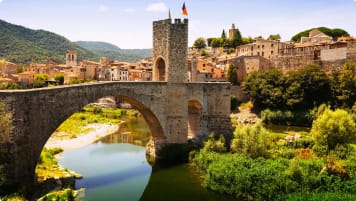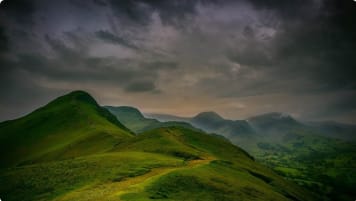India Short Tour | Small group tour for seniors
A short small group tour for Mature and seniors couples and solo travellers of India and its icons. Bounded by the majestic Himalayan ranges in the north and edged by an endless stretch of golden beaches. India is a vivid kaleidoscope of landscapes, magnificent historical sites, such as the Taj or red fort royal cities, such Dehli, Jaipur , Agra and Madras colourful people, and rich culture.
From A$9,250AUD

Highlights
- 1. Visit the wondrous Taj Mahal with its superb view.
- 2. Ride on an elephant to and from the top of the hill on which the Amber Fort is situated.
- 3. Tour the spectacular Elephanta Cave Temples off Mumbai's eastern shore.
- 4. Learn about the 3,000-year history of Delhi and visit its icons including the Red Fort, Raj Ghat, and the colourful shopping bazaars.
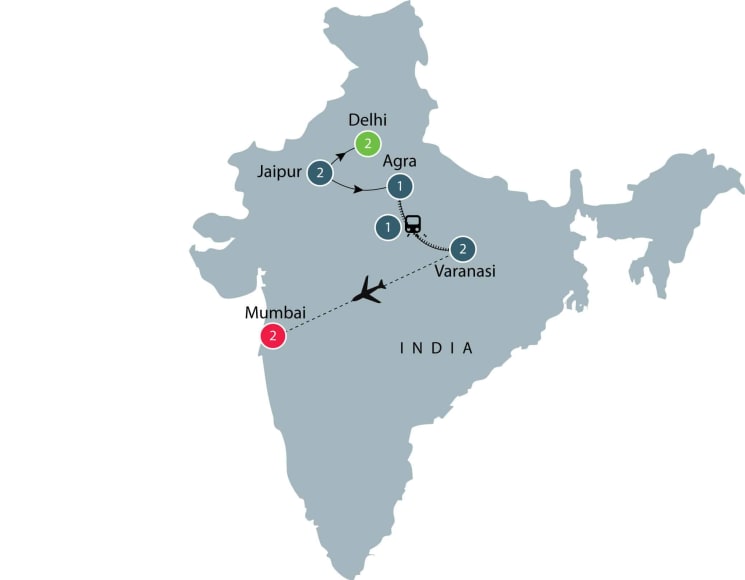
Departure Dates
| Departure Date | Price |
|---|---|
| 07 March 2025 Ends 17 March 2025 • 11 days A$9,750 Twin A$11,750 Single Available | Selected |
| 06 November 2025 Ends 16 November 2025 • 11 days A$9,750 Twin A$11,750 Single Available | |
| 06 March 2026 Ends 16 March 2026 • 11 days A$9,995 Twin A$11,750 Single Available | |
| 05 November 2026 Ends 15 November 2026 • 11 days A$9,995 Twin A$11,750 Single Available |
India Short Tour for Seniors
Odyssey offers easy, convenient, and relaxed escorted small group tours across India and beyond into the Indian Sub continent. We explore India's natural beauty, its ancient, and Imperial heritage, its World Heritage Sites, and world famous cities, all with some truly spectacular scenery along the way of people, culture and landscapes. This and more is all waiting to be explored on one of Odyssey’s small group tours of India, designed for the senior traveller, and led by experienced, and enthusiastic like minded people.
On this fully escorted small group tour of India, you will be taken on an amazing ten-day journey through the beautiful cities of Jaipur, Agra, Varanasi, and Mumbai. India is a feast for the eyes with pink palaces, dynamic landscapes, incredible cuisine and saris of every colour of the rainbow. With so much local culture and adventure offered on this group holiday, you're sure to have the trip of a lifetime. India group tours escorted are an excellent way to travel and explore this wonderful country, especially suited for the solo traveller.
India is a country of immense diversity and extremes – geographical, economic and spiritual. Its geography encompasses the glacial heights of the Himalaya in the north, the arid plains of the west, and palm-fringed tropical beaches in the south – a vast tapestry of mountains, plains, forests and deserts. India’s population exceeds a staggering billion people. It is home to over 18 official languages, including English, Bengali, Urdu and Hindu, with dialects and accents that change in the space of kilometres. It is a land of ancient traditions and countless mother tongues, a nation where the culture, dress, language and cuisine change with the diverse terrain. There is evidence that a sophisticated and urbanised culture flourished in what is now known as India from about 2600 to 2000 B.C. Since then, India's history has been marked with invasions, wars and the collapse of empires, which could be explored from the Mughals to British rule. Then there is also the long history over the centuries of Spice and the trade with the Arabs, the Portuguese and the Spaniards.
India Short Tour Itinerary
India is by no measure a monolithic culture or state, but a diverse collection of historic cities and nations each with their own distinct histories, language and culture. Odyssey explores these histories and distinctions, with each destination telling part of the rich and complex story that makes up contemporary India. Our small group tour visits the India's golden triangle (Agra, Delhi and Jaipur) and much more.
Delhi
Delhi embodies the synthesis between historic and modern India, featuring a frantic mix of medieval architecture, broad avenues, and modern design. Old Delhi and New Delhi are highlights of our day tour. Few cities have been built and rebuilt as many times as Delhi, with at least eight independent cities being established here, each leaving its ruins in the patchwork of the modern city. The earliest reference to a city in the Delhi area was made in the Mahabharata, with Delhi supposed to be Indraprastha, the legendary city of the Pandavas. Throughout its history Delhi has been ruled by numerous successive kingdoms, and has served the purpose of a religious, economic, and political hubs, and at one point a bastion against the invading Mongols. As the capital city, Delhi is home to important centres of religious, cultural and economic life and is a popular starting point for visitors to India.
Jaipur
Jaipur the legendary ‘Pink City’, epitomises the beauty and grandeur of historic India. The city takes its name from its founder, Maharaja Sawai Jai Singh, one of 18th century India’s most enlightened monarchs. Fascinated with astronomy, mathematics and science, Jai Singh worked with the Bengali architect and scholar Vidyadhar Bhattacharya to create Northern India’s first planned city, following a grid system. The city was later repainted completely in pale pink (traditionally the colour of hospitality) by Maharaja Ram Singh to welcome the Prince of Wales (later Edward VIII) in 1876. Today, all residents of the Old City are required by law to keep their buildings painted in pale salmon pink, upholding the historic image of the city.
Agra
Agra in India's central region, is the most city famous for the nation's most recognisable landmark, the Taj Mahal. The city was founded in 1501 by Sultan Sikander Lodi, as the capital of the Delhi sultanate. Just over 20 years later, Emperor Babur defeated the last Lodi Sultan at Panipat, 90 km to the north, and the Mughal dynasty was founded, expanding over swathes of northern India. Agra was the capital of the Mughal Empire during the reigns of Jahangir, Akbar, and Shah Mahan. It was during this period that the city reached its peak of magnificence, with the grand structures of the Taj Mahal and the other mausoleums built along the banks of the Yamuna River.
Varanasi
Varanasi also known as the 'city of lights', is one of the world's oldest inhabited cities. Colourful, intense and mystical, it is the spiritual capital of India and the country’s holiest Hindu city, located on the banks of the river Ganges in Uttar Pradesh. Varanasi is a city of pilgrimage for many Hindu and Jain people. Known as the city of Shiva, one of the principal deities of Hinduism, it is auspicious to die in Varanasi, as those who die here will be liberated from the cycle of reincarnation. For travellers, visiting Varanasi is a cultural experience like no other and the most interesting part of being in the city is just observing what takes place around and the many rituals going on throughout the day.
Mumbai
Mumbai (formerly Bombay) is one of the world’s great metropolises, it embodies India at its most vibrant and contrasted, where Bollywood stars and finance billionaires live in luxury, and those left behind populate Dharavi, the world’s largest slum. Mumbai is the energetic heart of modern India, with its role as the financial, commercial, and entertainment capital of the subcontinent. The city of Mumbai has an ancient history. Settlements here date back to 1000 BC, with the city being a centre of maritime trade with Persia and Egypt. In 1348 the city was captured by the Muslim Sultan of Gujarat, then, in 1534 it was ceded to the Portuguese, before coming under British rule as part of the dowry of the Portuguese princess Catherine of Braganza, marrying Charles II in 1661. Today, Mumbai has a population of around 19.98 million, making it the seventh most populous city in the world and the second-biggest in India. As the richest city in India, Mumbai draws migrants from around the nation, seeking opportunities in finance, commerce, or hoping to find fame in Bollywood, the world’s biggest film industry.
India Short Tour Highlights
One of the highlights of our India small group tour is a journey to the Amber Fort, atop a hill in the heart of Jaipur. The Amber Fort gets its name because it is built from breathtaking pale yellow, red and pink sandstone, as well as white marble. The result is a stunning series of palaces, gardens and four separate courtyards. Built in 1592 and sometimes referred to as the Amber Palace, it was the main residence of the Rajput Maharajas.
Our small group tour will ascend by elephant to the top of the hill, and look down on spectacular views of the landscape and Maota Lake.
The Taj Mahal is another tourist highlight on any India tour, but we also explore other archaeological and historical wonders off the tourist trail. One of these is Varanasi, on the west bank of the Ganges. This is India’s holiest Hindu city. The 90 or so Ghats – steep steps leading to the banks of the river – are emblematic of the region. While here, we take a ferry pilgrimage along the river early in the morning to watch the sun rise over the Ganges, guided by our tour manager.
We also experience the spectacular Elephanta Cave Temples off Mumbai’s eastern shore. A UNESCO World Heritage site, the cave temples are chiselled into the rocky cliff and dedicated to the god Shiva.
Other highlights of the small group tours India - short tour include learning about the 3,000-year history of Delhi. While in this city, our escorted tour visits include the Red Fort, Raj Ghat, and the colourful shopping bazaars.
You can learn more about India with Odyssey's country profile where all other escorted group tours departures are listed as well, for example a long version of this guided tour which includes travelling to South India.
For more details about this India group tour, click the ‘Top 5’ or ‘Itinerary’ buttons above! If you’re keen to experience this tour, please call or send an email. Or, to book, simply fill in the form on the right hand side of this page.
Articles about India
The following list of articles are either published by Odyssey Traveller or are carefully selected external sources to maximise senior traveller's knowledge and enjoyment of India when visiting:
- India’s Mughal Empire
- Clash of the Mughals and the Marathas
- History of British Rule in India
- Discovering India
- Top 20 World Heritage Sites You Must Visit
- 7 Wonders of India (World Atlas)
- New Seven Wonders of the World (Travel Channel)
- 7 Things You Didn’t Know About the Qutub Minar (National Geographic Traveller India)
- Incredible India
Gallery
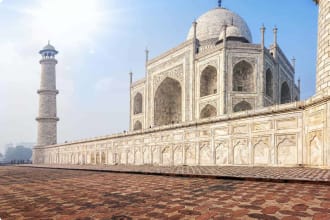

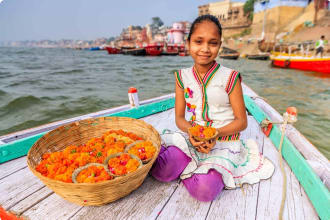
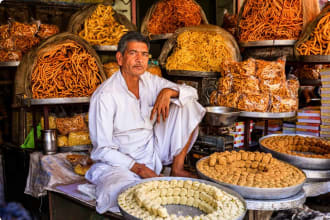
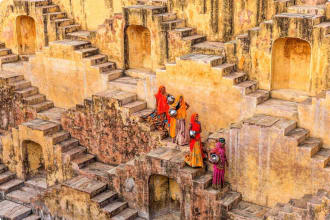
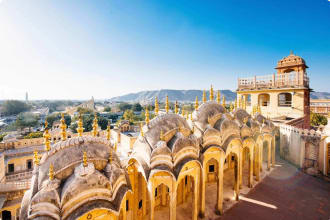
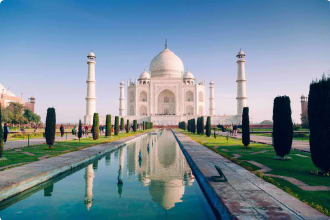
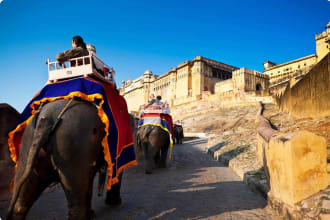

Itinerary
11 days
Day 1: Delhi
Accommodation: 2 nights at Royal Plaza or similar.
Upon arrival in Delhi, we transfer to our hotel individually. Our tour begins with welcome dinner this evening at a speciality restaurant.
(D)
Day 2: Delhi
Accommodation: Royal Plaza or similar.
Delhi, the capital city of India, is a metropolis of great importance to the nation, both the gateway to the country and the seat of its political power. Located in north India, consists of two components: Old Delhi, in the north, the historic city; and New Delhi, in the south, providing an intoxicating mix of the ancient and the modern. In its 3,000-year history, Delhi has been the site of 7 different cities. Its strategic location has long defined it as the seat of power. Delhi is a city waiting to be explored.
(B,D)
Day 3: Jaipur
Accommodation: 2 nights at Diggi Palace or similar.
After breakfast we drive to Jaipur (265 km / 5 hours drive) and on arrival we will check in to our hotel and enjoy the rest of the evening at leisure before heading out for dinner at a local restaurant.
The capital of Rajasthan was built in pink by the notable astronomer Maharaja Jai Singh a century ago in honour of a visiting prince and ever since, it has retained this colour. This city is 260 years old. We visit Maharaja’s City Palace, the pink rose of the residential and business areas.
(B,D)
Day 4: Jaipur
Accommodation: Diggi Palace or similar.
After breakfast we explore the Pink City with our tour guide on an excursion to Amber Fort, situated just outside the city, where we ride on elephant to the top of the hill on which the fort is situated. The Fort Palace of Amber was the Kachhawahas citadel until 1727, when their capital moved to Jaipur. Successive rulers continued to come here on important occasions to seek the blessings of the family deity, Shila Devi. The citadel was established in 1592 by Man Singh I on the remains of an old 11th-century fort, but the various buildings added by Jai Singh I (r. 1621-67) is what constitutes its magnificent centrepiece.
We have an afternoon sightseeing tour of the City Palace in the heart of Jaipur, known for its blend of Rajasthani and Mughal architecture. Not far away is the Central Museum. Occupying the Heart of Jai Singh II’s city, the City Palace has been home to the rulers of Jaipur since the first half of the 18th century. The sprawling complex is a superb blend of Rajput and Mughal architecture, with open, airy Mughal-style public buildings leading to private apartments. Today, part of the complex is open to the public as the Maharaja Sawai Man Singh II Museum, popularly known as the City Palace Museum. Its treasures, which include miniature paintings, manuscripts, Mughal carpets, musical instruments, royal costumes, and weaponry, provide a splendid introduction to Jaipur’s princely past, and its fascinating arts and crafts.
Our next stop is Hawa Mahal. A whimsical addition to Rajasthan’s rich architectural vocabulary, the fanciful Hawa Mahal or “Palace of Winds” was erected in 1799 by the aesthete Sawai Pratap Singh (r.1778-1803). Its ornate pink facade has become an icon for the city. The tiered Baroque-like composition of projecting windows and balconies with perforated screens is five stories high but just one room deep, its walls not more than 20 centimetres (8 inches) thick, built of lime and mortar. The structure was designed in this way to enable the veiled ladies of the harem to observe unnoticed the lively street scenes below. Dedicated to Lord Krishna, the Hawa Mahal, seen from afar, looks like the mukut (crown) that often adorns the god’s head. Visitors can climb up the winding ramp to the top, and a gateway towards the west leads into the complex. Within are administrative offices and the Archaeological Musuem, which houses a small collection of sculptures and local handicrafts, including some utensils dating back to the 2nd century BC.
We continue to Jantar Mantar. Of the five observatories built by Sawai Jai Singh II, the one in Jaipur is the largest and best preserved: the others are in Delhi, Ujjain, Mathura, and Varanasi. A keen astronomer himself, Jai Singh kept abreast of the latest astronomical studies in the world, and was most inspired by the work of Mirza Ulugh Beg, the astronomer-king of Samarkand. Built between 1728 and 1734, the observatory has been described as “the most realistic and logical landscape in stone,” its 16 instruments resembling a giant sculptural composition. Some of the instruments are still used to forecast how hot the summer months will be, the expected date of arrival, duration, and intensity of the monsoon, and the possibility of floods and famine.
At the end of our day tour we’ll return to our hotel early evening for dinner.
(B,D)
Day 5: Agra
Accommodation: 1 night at The Wyndham Agra or similar.
After breakfast we depart for Agra (233 km / 5 hours drive). En route we stop for lunch at Bharatpur and, if time permits, we will stop at Keoladeo Bharatpur Bird Sanctuary before continuing to visit Fatehpur Sikri with a guided tour. An old deserted town from the Mughal Dynasty, Fatehpur Sikri, built in red sandstone in honour of Saint Salim Chisti who foretold the birth of 3 sons to Emperor Akbar, is an example of robust stability combined with much originality. Each important edifice here represents a style in itself. Notable among them is the Diwan-e-Khas, entirely unique in its concept, having a tall vaulted room with an intricately-carved central pillar supporting a platform that once held the emperor’s throne. The airy Panch Mahal, a 5-storied structure rising in pyramidal fashion, was probably used by the ladies of the court. Set like a jewel in a courtyard of pink sandstone, it is the finest building here, with the marble Tomb of Salim Chisti enclosed by finely carved, lacy marble screens. The Buland Darwaza, an imposing gateway 54 metres high, was built to commemorate Akbar’s Aligarh. The tomb is a combination of Muslim and Hindu architectural styles. We arrive in Agra in time for dinner and check in at our hotel.
Agra is famous as being home to one of the Seven Wonders of the World, the Taj Mahal. The city is also famous for its craftsmen and their superb inlay work on marble and soapstone, carpets, gold thread embroidery, and leather shoes. Also of interest are the Agra Fort, Sikandra, Ram Bagh, and Itmad-Ud-Daulah. Thirty five kilometres away are the imperial ruins of the Mughal city, Fatehpur Sikri. Agra is an old city and it is said that its name was derived from Agrabanad, a forest that finds mention in the epic Mahabharata.
(B,D)
Day 6: Agra - Varanasi overnight train
Accommodation: Overnight train.
Today we visit the wondrous Taj Mahal with its superb view. Taj Mahal, the architectural modern day wonder of the world, is a fine example of the fusion of many architectural styles. We continue with a visit to Agra Fort, designed and built by Akbar in 1565 A.D. It is constructed with barricaded walls of red sandstone and it houses the beautiful Pearl Mosque and numerous palaces including the Jahangir Mahal, Diwan-i-Khas, Diwan-i-Am, Macchhi Bhawan, Nagina Masjid, Meena Bazar, Moti Masjid, Sheesh Mahal, and Musamman Burj, from where Taj Mahal is visible in all its beauty. In a fit of extreme irony, Emperor Sahahjahan, a prisoner of his son Aurangzeb in his old age, was put in a cell in the fort from where he could gaze at the Taj Mahal in the distance. Later in the evening we will have an early dinner followed by a transfer to the train station where we will board our overnight train to Varanasi.
One of the world’s most famous buildings, the Taj Mahal was built by the Mughal emperor Shah Jahan in memory of his favourite wife, Mumtaz Mahal, who died in 1631. Its perfect proportions and exquisite craftsmanship have been described as “a vision, a dream, a poem, a wonder.” This sublime garden-tomb, an image of the Islamic garden of paradise, cost nearly 41 million rupees and 500 kilos (1,102 lbs) of gold. About 20,000 workers laboured for 12 years to complete it in 1643.
Situated on the West Bank of the Yamuna, Agra Fort was built by Emperor Akbar between 1565 and 1573. Its imposing red sandstone ramparts form a crescent along the riverfront, and encompass an enormous complex of courtly buildings, ranging in style from the early eclecticism of Akbar to the sublime elegance of Shah Jahan. The barracks to the north are 19th-century British additions. A deep moat, once filled with water from the Yamuna, surrounds the fort.
(B,D)
Day 7: Varanasi
Accommodation: 2 nights at Hotel Hindusthan or similar.
Upon arrival at the Varanasi train station we will be transferred to our hotel to freshen up. After lunch we will have a half-day sightseeing tour of the city including visiting the Ghats and attending the evening Aarti ritual at the Ghats for the river Ganges.
Also known as Kashi (“the City of Light”), or as Benares, Varanasi is situated on the west bank of the Ganges and is India’s holiest Hindu City, with a spiritual and religious legacy that goes back nearly 3,000 years. This is the city of Shiva, the foremost among the 12 places where the god burrowed and then burst into the sky in a fiery pillar of light (Jyotirlinga). Sanctified by Shiva’s all-pervading presence and the sacred Ganges, the 90 or so ghats along the river define the life and identify of Varanasi. Stretching from the southern Asi Ghat to the northern Adi Keshava Ghat, close to the Malviya Bridge, the Ghat covers more than 6 kilometres. Lined with temples and shrines, the ghats reverberate with the endless cycle of Hindu religious practice, from daily rituals to profound rites of passage.
(B,L,D)
Day 8: Varanasi
Accommodation: Hotel Hindusthan or similar.
Today we have an early morning boat ride in the Ganges, a highlight of our India tour, a ferry pilgrimage from Ghat to Ghat. People bathe early in the morning to offer prayers to the rising sun. The 2 cremation ghats are Manikarniks and Harishchandra, where funeral pyres burn day and night. Hindus believe that to die in Kashi and to be cremated on banks of the Ganges is to attain release from the cycle of birth and death.
After our boat ride we return to the hotel for breakfast, and then depart for our tour of Sarnath, the buried Buddhist city where Lord Buddha gave his first sermon. Sarnath was a renewed school of learning from 6th century BC to 12th century AD. We visit the ruins, the stupa, the Buddhist temple, and the museum.
(B,D)
Day 9: Mumbai
Accommodation: 2 nights at Fariyas Hotel or similar.
Today we fly to Mumbai and enjoy the remainder of the day at leisure.
The capital of Maharashtra is India’s most dynamic, cosmopolitan, and crowded city. The country’s financial centre and its busiest port, Mumbai is also home to the world’s biggest cinema industry, popularly known as Bollywood. Some 16 million people, from billionaire tycoons to homeless pavement dwellers, live in this teeming megalopolis.
(B,D)
Day 10: Mumbai
Accommodation: Fariyas Hotel or similar.
In the morning we go for an Elephanta Excursion and the rest of the day will be spent doing sightseeing of Mumbai visiting the Prince of Wales Museum, The Gateway to India, etc.
The Elephanta cave temples are a UNESCO World Heritage Site. Located on an island off Mumbai’s eastern shore, the 6th-century AD Elephanta cave temples, chiselled into a rocky cliff and dedicated to Shiva, contain some great masterpieces of Indian sculpture. Originally called Ghaarapuri or “Fort-City,” the island was renamed Elephanta by the Portuguese after a huge stone elephant that once stood here.
(B,D)
Day 11: Mumbai
Your India vacation comes to an end this morning. Travellers on the long version of this escorted group tour continue their journey on to Southern India.
(B)
Tour Notes
- Group size is limited to a maximum of 18 participants.
- Itineraries may change if flight or rail schedules, site availability, and other inclusions have to be amended prior to departure.
Includes / Excludes
What’s included in our Tour
- 9 nights of hotel accommodation.
- 1 night rail travel with shared facilities.
- 9 breakfasts, 1 lunch, and 9 dinners.
- One internal flight in economy class (luggage limits may apply)
- Transport in comfortable and modern coaches.
- All excursions and entrance fees.
- Gratuities and necessary tips
- Services of Tour Leader for the duration of tour and local Tour Director.
- Detailed preparatory material.
What’s not included in our Tour
- International airfares and departure taxes.
- Comprehensive international travel insurance.
- Visa Service and Fee (where applicable)
- Items of a personal nature such as telephone calls and laundry.
Participants must be able to carry their own luggage, climb and descend stairs, be in good health, mobile and able to participate in 3-5 hours of physical activity per day, the equivalent of walking / hiking up to 8 kilometers per day on uneven ground.
Book now
Make it a private tour
Easing your journey
Crossing international borders with restrictions
The list of requirements to travel internationally has changed and will continue to change for several years. Odyssey is here to assist you in managing your way through these requirements:
For more information see our Crossing international borders with restrictions page.
Book With Confidence
If less than 30 days before your tour starts you are unable to travel as a result of Government travel restrictions, Odyssey Traveller will assist you with a date change, provide you with a credit or process a refund for your booking less any non-recoverable costs.
See Terms and conditions for details.
Peace of Mind Travel
The safety of our travellers, tour leader, local guide and support staff has always been our top priority and with the new guidelines for public health and safety for keeping safe for destinations around the world, we’ve developed our plan to give you peace of mind when travelling with us.
See Peace of Mind Travel for details.
Reading List Download PDF
India: A History
John Keay
Fully revised with forty thousand new words that take the reader up to present-day India, John Keay’s India: A History spans five millennia in a sweeping narrative that tells the story of the peoples of the subcontinent, from their ancient beginnings in the valley of the Indus to the events in the region today. In charting the evolution of the rich tapestry of cultures, religions, and peoples that comprise the modern nations of Pakistan, India, and Bangladesh, Keay weaves together insights from a variety of scholarly fields to create a rich historical narrative. Wide-ranging and authoritative, India: A History is a compelling epic portrait of one of the world’s oldest and most richly diverse civilizations.
India: In Word and Image, Revised, Expanded and Updated
Eric Meola (Photographer), Bharati Mukherjee (Introduction)
Gorgeously jaw-dropping, India has been beautifully redesigned with 32 additional pages of glorious photos shot by Eric Meola since India was first published.
This revised and expanded version of Eric Meola's 2008 India takes the reader on a journey through Mumbai, Rajasthan, Agra, Dungarpur, along desert roads, to the Ganges water's edge, including spectacular ruins, the Taj Mahal, and the Festival of Elephants, capturing the spectacle and vibrant colors of these ancient regions.
INDIA is rapidly becoming one of the pre-eminent leaders of the twenty-first century. For more than a decade, Eric Meola has returned repeatedly to India, photographing the people, temples, landscapes, architecture, celebrations, and art of this uniquely exuberant and incredibly diverse country. Meola's journeys took him from the Himalayas and monasteries in the North to the temples of Tamil Nadu in the South, from the color and pageantry of Rajasthan in the West to the tea plantations of Darjeeling in the East. Over 200 photographs (edited from more than 25,000 images) will fill this beautifully printed, large-format book. The photographs will be accompanied by dozens of essays, stories, and poems by contemporary and classical Indian writers.
India: A Sacred Geography
Diana L. Eck
India: A Sacred Geography is the culmination of more than a decade's work from the renowned Harvard scholar Diana L. Eck. The book explores the sacred places of India, taking the reader on an extraordinary trip through the beliefs and history of this rich and profound place, as well as providing a basic introduction to Hindu religious ideas and how those ideas influence our understanding of the modern sense of "India" as a nation.
A Passage to India
E.M. Forster
Among the greatest novels of the twentieth century and the basis for director David Lean’s Academy Award-winning film, A Passage to India tells of the clash of cultures in British India after the turn of the century. In exquisite prose, Forster reveals the menace that lurks just beneath the surface of ordinary life, as a common misunderstanding erupts into a devastating affair.
The End of Karma: Hope and Fury Among India's Young
Somini Sengupta
A penetrating, personal look at contemporary India―the world’s largest democracy at a moment of transition.
Somini Sengupta emigrated from Calcutta to California as a young child in 1975. Returning thirty years later as the bureau chief for The New York Times, she found a vastly different country: one defined as much by aspiration and possibility―at least by the illusion of possibility―as it is by the structures of sex and caste. The End of Karma is an exploration of this new India through the lens of young people from different worlds: a woman who becomes a Maoist rebel; a brother charged for the murder of his sister, who had married the “wrong” man; a woman who opposes her family and hopes to become a police officer. Driven by aspiration―and thwarted at every step by state and society―they are making new demands on India’s democracy for equality of opportunity, dignity for girls, and civil liberties. Sengupta spotlights these stories of ordinary men and women, weaving together a groundbreaking portrait of a country in turmoil.
India: Brief History of a Civilization
Thomas R. Trautmann
India: Brief History of a Civilization, Second Edition, provides a brief overview of a very long period, allowing students to acquire a mental map of the entire history of Indian civilization in a short book. Most comprehensive histories devote a few chapters to the early history of India and an increasing number of pages to the more recent period, giving an impression that early history is mere background and that Indian civilization finds its fulfillment in the nation-state. Thomas R. Trautmann believes that the deep past lives on and is a valuable resource for understanding the present day and for creating a viable future. The result is a book that is short enough to read in a few sittings, but comprehensive in coverage--5,000 years of India in brief.
Incarnations: A History of India in Fifty Lives
Sunil Khilnani
For all of India’s myths, its sea of stories and moral epics, Indian history remains a curiously unpeopled place. In Incarnations, Sunil Khilnani fills that space, recapturing the human dimension of how the world’s largest democracy came to be. His trenchant portraits of emperors, warriors, philosophers, film stars, and corporate titans―some famous, some unjustly forgotten―bring feeling, wry humor, and uncommon insight to dilemmas that extend from ancient times to our own. As he journeys across the country and through its past, Khilnani uncovers more than just history. In rocket launches and ayurvedic call centers, in slum temples and Bollywood studios, in California communes and grimy ports, he examines the continued, and often surprising, relevance of the men and women who have made India―and the world―what it is. We encounter the Buddha, “the first human personality”; the ancient Sanskrit linguist who inspires computer programmers today; the wit and guile of India’s Machiavelli; and the medieval poets who mocked rituals and caste. In the twentieth century, Khilnani sets Gandhi and other political icons of the independence era next to actresses, photographers, and entrepreneurs. Incarnations is an ideal introduction to India―and a provocative and sophisticated reinterpretation of its history.
The Chaos of Empire: The British Raj and the Conquest of India
Jon Wilson
The popular image of the British Raj—an era of efficient but officious governors, sycophantic local functionaries, doting amahs, blisteringly hot days and torrid nights—chronicled by Forster and Kipling is a glamorous, nostalgic, but entirely fictitious. In this dramatic revisionist history, Jon Wilson upends the carefully sanitized image of unity, order, and success to reveal an empire rooted far more in violence than in virtue, far more in chaos than in control.
Through the lives of administrators, soldiers, and subjects—both British and Indian—The Chaos of Empire traces Britain’s imperial rule from the East India Company’s first transactions in the 1600s to Indian Independence in 1947. The Raj was the most public demonstration of a state’s ability to project power far from home, and its perceived success was used to justify interventions around the world in the years that followed. But the Raj’s institutions—from law courts to railway lines—were designed to protect British power without benefiting the people they ruled. This self-serving and careless governance resulted in an impoverished people and a stifled society, not a glorious Indian empire.
Jon Wilson’s new portrait of a much-mythologized era finally and convincingly proves that the story of benign British triumph was a carefully concocted fiction, here thoroughly and totally debunked.
Behind the Beautiful Forevers: Life, Death, and Hope in a Mumbai Undercity
Katherine Boo
In this brilliant, breathtaking book by Pulitzer Prize winner Katherine Boo, a bewildering age of global change and inequality is made human through the dramatic story of families striving toward a better life in Annawadi, a makeshift settlement in the shadow of luxury hotels near the Mumbai airport. As India starts to prosper, the residents of Annawadi are electric with hope. Abdul, an enterprising teenager, sees “a fortune beyond counting” in the recyclable garbage that richer people throw away. Meanwhile Asha, a woman of formidable ambition, has identified a shadier route to the middle class. With a little luck, her beautiful daughter, Annawadi’s “most-everything girl,” might become its first female college graduate. And even the poorest children, like the young thief Kalu, feel themselves inching closer to their dreams. But then Abdul is falsely accused in a shocking tragedy; terror and global recession rock the city; and suppressed tensions over religion, caste, sex, power, and economic envy turn brutal. With intelligence, humor, and deep insight into what connects people to one another in an era of tumultuous change, Behind the Beautiful Forevers, based on years of uncompromising reporting, carries the reader headlong into one of the twenty-first century’s hidden worlds—and into the hearts of families impossible to forget.
Winner of the National Book Award | The PEN/John Kenneth Galbraith Award | The Los Angeles Times Book Prize | The American Academy of Arts and Letters Award | The New York Public Library’s Helen Bernstein Book Award
Koh-i-Noor: The History of the World's Most Infamous Diamond
William Dalrymple
The first comprehensive and authoritative history of the Koh-i-Noor, arguably the most celebrated and mythologised jewel in the world.
On 29 March 1849, the ten-year-old Maharajah of the Punjab was ushered into the magnificent Mirrored Hall at the centre of the great Fort in Lahore. There, in a public ceremony, the frightened but dignified child handed over great swathes of the richest country in India in a formal Act of Submission to a private corporation, the East India Company. He was also compelled to hand over to the British monarch, Queen Victoria, perhaps the single most valuable object on the subcontinent: the celebrated Koh-i Noor diamond. The Mountain of Light.
The history of the Koh-i-Noor that was then commissioned by the British may have been one woven together from gossip of Delhi bazaars, but it was to be become the accepted version. Only now is it finally challenged, freeing the diamond from the fog of mythology that has clung to it for so long. The resulting history is one of greed, murder, torture, colonialism and appropriation told through an impressive slice of south and central Asian history. It ends with the jewel in its current controversial setting: in the crown of Queen Elizabeth the Queen Mother.
Masterly, powerful and erudite, this is history at its most compelling and invigorating.
Connectivity in Motion: Island Hubs in the Indian Ocean World (Palgrave Series in Indian Ocean World Studies)
Burkhard Schnepel (Editor), Edward A. Alpers (Editor)
This original collection brings islands to the fore in a growing body of scholarship on the Indian Ocean, examining them as hubs or points of convergence and divergence in a world of maritime movements and exchanges. Straddling history and anthropology and grounded in the framework of connectivity, the book tackles central themes such as smallness, translocality, and “the island factor.” It moves to the farthest reaches of the region, with a rich variety of case studies on the Swahili-Comorian world, the Maldives, Indonesia, and more. With remarkable breadth and cohesion, these essays capture the circulations of people, goods, rituals, sociocultural practices, and ideas that constitute the Indian Ocean world. Together, they take up “islandness” as an explicit empirical and methodological issue as few have done before.
Spices in the Indian Ocean World (An Expanding World: The European Impact on World History, 1450 to 1800)
M Pearson
By turns exotic, valuable and of cardinal importance in the development of world trade, spices, as the editor reminds us, are today a mundane accessory in any well-equiped kitchen; in the 15th-18th centuries, the spice trade from the Indian Ocean to markets all over the world was a major economic enterprise. Setting the scene with extracts from Garcia da Orta's fascinating contemporary Colloquies on the drugs and simples of India [Goa 1563], this collection reviews trade in a wide variety of spices, exploring merchant organisation, transport and marketing as well as detailing the quantitative evidence on the fluctuations in spice trade. The evidence and historical debates concerning the 16th-century revival of the Mediterranean and Red Sea spice trade at this time, are fully represented here
